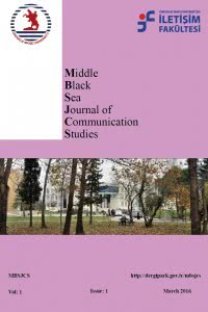Medya Okuryazarlığına Giriş
Media literacy that has been studied in the world for a long time, has become a topic of interest both by the academicians and the educators in recent years. This book ,which is prepared in five chapters in order to give the meaning of media literacy and to explain how media literacy education has to be planned in Turkey, presents the studies in the development process of media literacy together with examples from different countries. The author, in her work, evaluating the basic premise of media literacy as a part of educational process, has made recommendations on how this training should be applied. The target audience of the book is, as indicated in the preface, the readers, who are familiar with the subject matter at different levels. The basic purpose of writing the book has been indicated by the author as creating awareness in relation with ensuring the correct analysis and interpretation of media messages and carrying the society to a certain level of awareness. The author has emphasized that she preferred to handle the scientific phenomena in an integrated way in order to create a certain level of information foreground related with the area to address readers from every knowledge level. After four main chapters prepared to draw the conceptual and theoretical framework starting from the foundations of communication up to the structures of media institutions and media messages, the author has handled the media literacy matter in the last chapter.
Anahtar Kelimeler:
Media literacy, studied, topic of interest
An Introduction to Media Literacy
Media literacy that has been studied in the world for a long time, has become a topic of interest both by the academicians and the educators in recent years. This book ,which is prepared in five chapters in order to give the meaning of media literacy and to explain how media literacy education has to be planned in Turkey, presents the studies in the development process of media literacy together with examples from different countries. The author, in her work, evaluating the basic premise of media literacy as a part of educational process, has made recommendations on how this training should be applied. The target audience of the book is, as indicated in the preface, the readers, who are familiar with the subject matter at different levels. The basic purpose of writing the book has been indicated by the author as creating awareness in relation with ensuring the correct analysis and interpretation of media messages and carrying the society to a certain level of awareness. The author has emphasized that she preferred to handle the scientific phenomena in an integrated way in order to create a certain level of information foreground related with the area to address readers from every knowledge level. After four main chapters prepared to draw the conceptual and theoretical framework starting from the foundations of communication up to the structures of media institutions and media messages, the author has handled the media literacy matter in the last chapter.
Keywords:
Media literacy, Introduction, evaluating the basic premise,
- Yayın Aralığı: Yılda 2 Sayı
- Başlangıç: 2016
- Yayıncı: Ondokuz Mayıs Üniversitesi
